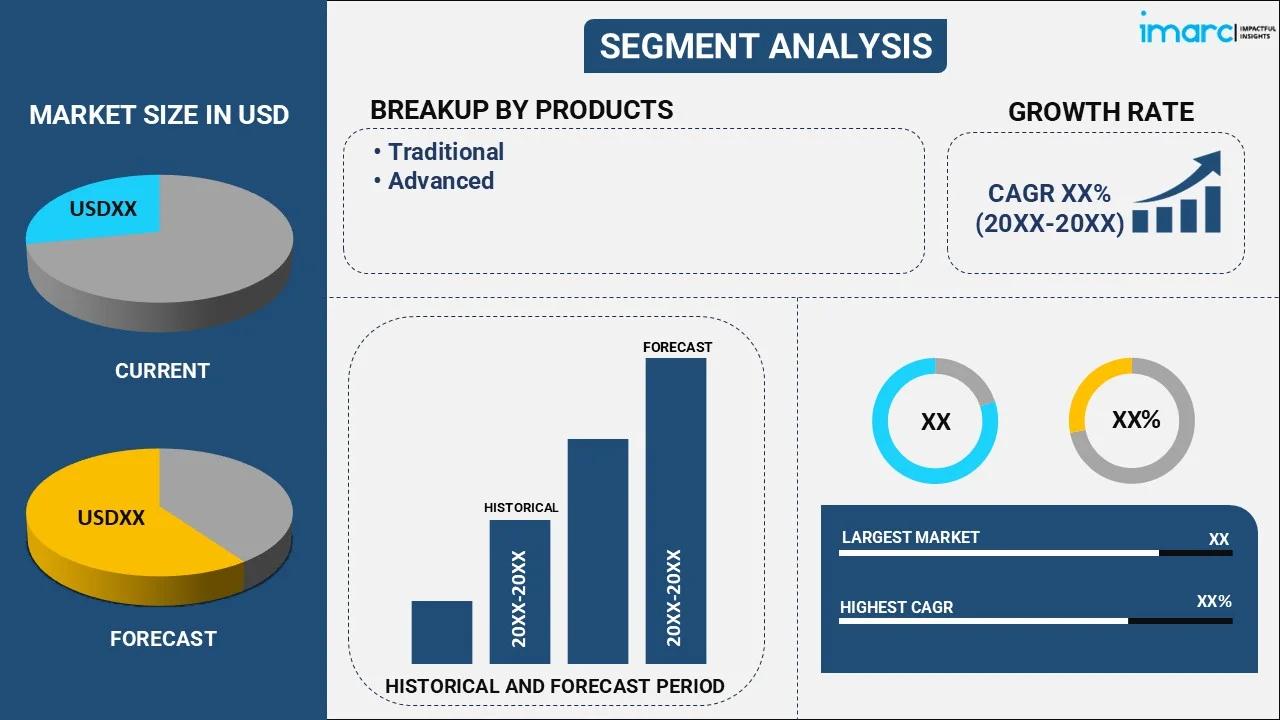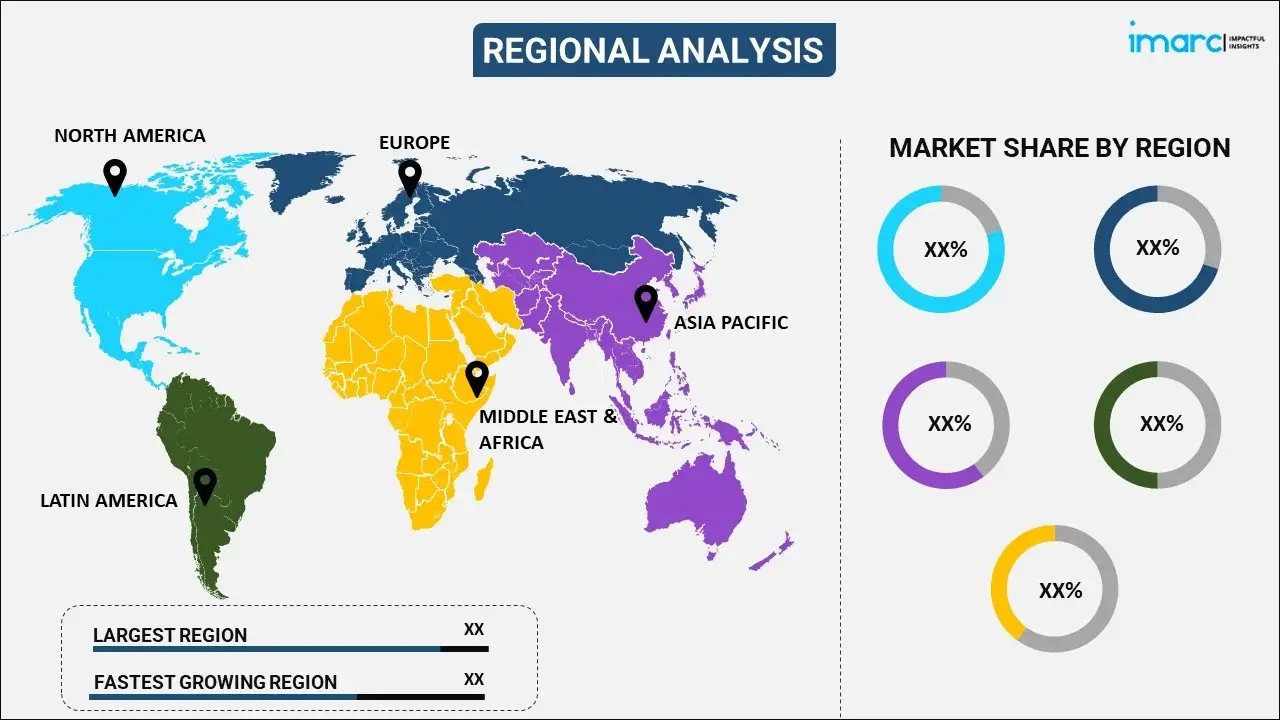
Ceramics Market Report by Product (Traditional, Advanced), Application (Tiles, Sanitary Wares, Abrasives, Pottery, Bricks and Pipes, and Others), End Use (Building and Construction, Industrial, Medical, and Others), and Region 2025-2033
Market Overview:
The global ceramics market size reached USD 187.0 Billion in 2024. Looking forward, IMARC Group expects the market to reach USD 319.0 Billion by 2033, exhibiting a growth rate (CAGR) of 6.12% during 2025-2033. The rising product adoption in the construction industry, the growing inclination toward renewable energy sources, and various technological advancements in the manufacturing process for complex shapes and cost-effective production represent some of the key factors driving the market.
|
Report Attribute
|
Key Statistics
|
|---|---|
|
Base Year
|
2024
|
|
Forecast Years
|
2025-2033
|
|
Historical Years
|
2019-2024
|
|
Market Size in 2024
|
USD 187.0 Billion |
|
Market Forecast in 2033
|
USD 319.0 Billion |
| Market Growth Rate 2025-2033 | 6.12% |
Ceramics are non-metallic, inorganic materials that are typically made from a combination of clay, minerals, and other raw materials. They are known for their high-temperature resistance, hardness, strength, and ability to withstand wear and corrosion. They can be classified into two main types, namely traditional ceramics and advanced ceramics. Traditional ceramics include clay-based products such as pottery, porcelain, and bricks. They are typically made by shaping the clay and then firing it at high temperatures to create a rigid, solid structure. On the other hand, advanced ceramics, also known as engineered or technical ceramics, are a class of ceramics that have been specifically engineered to possess superior properties and performance. They are made from refined and processed raw materials using advanced manufacturing techniques. As a result, ceramics exhibit exceptional mechanical strength, high temperature and chemical resistance, electrical insulation, and biocompatibility. Consequently, they are utilized in structural components, thermal insulators, electrical insulators, cutting tools, biomedical implants, catalysts, and many other areas where their unique characteristics are required.

Ceramics Market Trends:
The market is primarily driven by the expanding construction industry. Ceramics are extensively used in the construction industry for applications such as tiles, sanitaryware, bricks, and refractories. The rapid urbanization and infrastructure development in emerging economies, as well as renovation and remodeling activities in developed regions, are contributing to the demand for ceramics in the construction sector. In addition, ceramics find applications in the automotive industry for components such as catalytic converters, sensors, and engine parts. The demand for lightweight, durable, and high-temperature resistant materials in automotive manufacturing drives the adoption of ceramics, particularly advanced ceramics, to enhance fuel efficiency, reduce emissions, and improve performance. Besides this, the growing inclination toward renewable energy sources is also contributing to market growth. Ceramics play a crucial role in energy generation, storage, and conservation. They are used in applications like solid oxide fuel cells, gas turbines, solar panels, and thermal insulation. Moreover, the market is further propelled by the increasing healthcare and biomedical product applications. Ceramics are widely used in the healthcare and biomedical fields due to their biocompatibility and resistance to wear and corrosion. They are utilized in dental implants, orthopedic implants, surgical instruments, and medical devices. This, coupled with the development of advanced manufacturing processes, such as additive manufacturing (3D printing), has expanded the possibilities for ceramics in terms of complex shapes, customization, and cost-effective production, thus contributing to market growth.
Key Market Segmentation:
IMARC Group provides an analysis of the key trends in each segment of the global ceramics market, along with forecasts at the global, regional, and country levels from 2025-2033. Our report has categorized the market based on product, application, and end use.
Product Insights:

- Traditional
- Advanced
The report has provided a detailed breakup and analysis of the ceramics market based on the product. This includes traditional and advanced. According to the report, traditional represented the largest segment.
Application Insights:
- Tiles
- Sanitary Wares
- Abrasives
- Pottery
- Bricks and Pipes
- Others
A detailed breakup and analysis of the ceramics market based on the application has also been provided in the report. This includes tiles, sanitary wares, abrasives, pottery, bricks and pipes, and others. According to the report, tiles accounted for the largest market share.
End Use Insights:
- Building and Construction
- Industrial
- Medical
- Others
A detailed breakup and analysis of the ceramics market based on the end use has also been provided in the report. This includes building and construction, industrial, medical, and others. According to the report, building and construction accounted for the largest market share.
Regional Insights:

- North America
- United States
- Canada
- Europe
- Germany
- France
- United Kingdom
- Italy
- Spain
- Russia
- Others
- Asia Pacific
- China
- Japan
- India
- South Korea
- Australia
- Indonesia
- Others
- Latin America
- Brazil
- Mexico
- Others
- Middle East and Africa
The report has also provided a comprehensive analysis of all the major regional markets, which include North America (the United States and Canada); Europe (Germany, France, the United Kingdom, Italy, Spain, Russia and others); Asia Pacific (China, Japan, India, South Korea, Australia, Indonesia, and others); Latin America (Brazil, Mexico, and others); and the Middle East and Africa. According to the report, Asia Pacific was the largest market for ceramics. Some of the factors driving the Asia Pacific ceramics market included the rising product adoption in automotive and healthcare industries, various technological advancements, and the expanding construction sector.
Competitive Landscape:
The report has also provided a comprehensive analysis of the competitive landscape in the global ceramics market. Detailed profiles of all major companies have been provided. Some of the companies covered include 3M Company, Applied Ceramics Inc., CeramTec GmbH, Compagnie de Saint-Gobain S.A., CoorsTek Inc, Corning Incorporated, Du-Co Ceramics Company, Kajaria Ceramics Limited, KYOCERA Corporation, Mohawk Industries, Inc, Momentive Performance Materials Quartz, Inc., Morgan Advanced Materials, RAK Ceramics P.J.S.C., etc. Kindly note that this only represents a partial list of companies, and the complete list has been provided in the report.
Report Coverage:
| Report Features | Details |
|---|---|
| Base Year of the Analysis | 2024 |
| Historical Period | 2019-2024 |
| Forecast Period | 2025-2033 |
| Units | Billion USD |
| Scope of the Report | Exploration of Historical and Forecast Trends, Industry Catalysts and Challenges, Segment-Wise Historical and Predictive Market Assessment:
|
| Products Covered | Traditional, Advanced |
| Applications Covered | Tiles, Sanitary Wares, Abrasives, Pottery, Bricks and Pipes, Others |
| End Uses Covered | Building and Construction, Industrial, Medical, Others |
| Regions Covered | Asia Pacific, Europe, North America, Latin America, Middle East and Africa |
| Countries Covered | United States, Canada, Germany, France, United Kingdom, Italy, Spain, Russia, China, Japan, India, South Korea, Australia, Indonesia, Brazil, Mexico |
| Companies Covered | 3M Company, Applied Ceramics Inc., CeramTec GmbH, Compagnie de Saint-Gobain S.A., CoorsTek Inc, Corning Incorporated, Du-Co Ceramics Company, Kajaria Ceramics Limited, KYOCERA Corporation, Mohawk Industries, Inc, Momentive Performance Materials Quartz, Inc., Morgan Advanced Materials, RAK Ceramics P.J.S.C., etc. |
| Customization Scope | 10% Free Customization |
| Post-Sale Analyst Support | 10-12 Weeks |
| Delivery Format | PDF and Excel through Email (We can also provide the editable version of the report in PPT/Word format on special request) |
Key Questions Answered in This Report:
- How has the global ceramics market performed so far, and how will it perform in the coming years?
- What are the drivers, restraints, and opportunities in the global ceramics market?
- What is the impact of each driver, restraint, and opportunity on the global ceramics market?
- What are the key regional markets?
- Which countries represent the most attractive ceramics market?
- What is the breakup of the market based on the product?
- Which is the most attractive product in the ceramics market?
- What is the breakup of the market based on the application?
- Which is the most attractive application in the ceramics market?
- What is the breakup of the market based on the end use?
- Which is the most attractive end use in the ceramics market?
- What is the competitive structure of the global ceramics market?
- Who are the key players/companies in the global ceramics market?
Key Benefits for Stakeholders
- IMARC’s report offers a comprehensive quantitative analysis of various market segments, historical and current market trends, market forecasts, and dynamics of the ceramics market from 2019-2033.
- The research study provides the latest information on the market drivers, challenges, and opportunities in the global ceramics market.
- The study maps the leading, as well as the fastest-growing, regional markets. It further enables stakeholders to identify the key country-level markets within each region.
- Porter's five forces analysis assist stakeholders in assessing the impact of new entrants, competitive rivalry, supplier power, buyer power, and the threat of substitution. It helps stakeholders to analyze the level of competition within the ceramics industry and its attractiveness.
- Competitive landscape allows stakeholders to understand their competitive environment and provides an insight into the current positions of key players in the market.
Need more help?
- Speak to our experienced analysts for insights on the current market scenarios.
- Include additional segments and countries to customize the report as per your requirement.
- Gain an unparalleled competitive advantage in your domain by understanding how to utilize the report and positively impacting your operations and revenue.
- For further assistance, please connect with our analysts.
 Inquire Before Buying
Inquire Before Buying
 Speak to an Analyst
Speak to an Analyst
 Request Brochure
Request Brochure
 Request Customization
Request Customization




.webp)




.webp)












